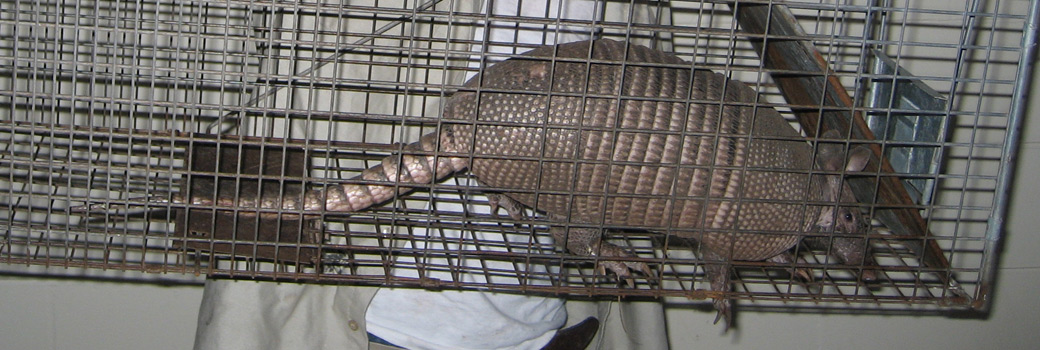- Houston Educational Article of the Month - About Texas Armadillo: Appearance, biology, and life cycle
About Texas Armadillo: Appearance, biology, and life cycle
About Armadillo: Appearance, biology, life cycle, habitat, diet, behavior: General Facts - Commonly, found in the southern half of the United States, Texas Armadillos are considered and classified as pests because of their inclination to dig large burrows as well as small holes in the yards of people. That is why people tend to complain that they:
- Dig large tunnels under their houses
- Dig small holes that litter their yards
- Destroy their landscaping and uproot their mulch
- Burrow so extensively that they end up cracking or damaging the concrete

Appearance
The most generally known armadillo’s complete name is the “nine banded armadillo”. It’s appearance is that of a small mammal that weighs roughly around thirteen pounds and covered in a hard outer layer which we consider its armor. Its name is derived from the fact that this armor is actually made out a bony plate that has nine different sections to it. These plates are called “scutes”. An armadillo generally shaped like an oblong and has a triangular shaped head with very close-set ears. Its color is usually on the brownish/grayish side or a light tan color.
General Biology
The armadillo is most active during the period between twilight and the early morning hours especially in the summertime. In winter, they are most likely to be active during the day. Armadillos don’t have only one den but have several dens in a given area which they use as a means of escape if the need arises. The armadillo despite its poor eyesight, has a very powerful sense of smell. It may appear clumsy and cumbersome but the Houston armadillo is in fact very agile and can run away pretty fast when threatened. It is also a very good swimmer as well as is able to walk across the bottom of small streams.
Life Cycle
The average lifespan of an armadillo is between twelve to fifteen years in captivity but can exceed these numbers out in the wild.
Habitat
Armadillos prefer the cover of dense, shady places such as brush, woodlands, forests and typically near creeks or rivers. The soil is also a factor for these animals. They prefer sandy or loamy soils which are looser and more porous. They also prefer places that are not too cold or too hot. You will not find Houston armadillos in areas with very long winters and that is way you will only find them in the southern half of the United States. They like to inhabit places which have cracks or crevices in them. Rocks are also very suitable for making burrows as well.
Diet
An armadillo’s diet consists of insects and other invertebrates and in order to find them in the soil, they use their sense of smell. They will also eat carrion and small amphibians if the need arises, however. Their very sticky tongues help these animals to collect colonies of insects and insect larvae (earthworms, scorpions, spiders, etc) in one give time which they find hiding in the dirt. They will also eat snakes as well as eggs of frogs, lizards, skinks, and snakes just to name a few.
Behavior
Unlike it’s smaller cousin, the three banded armadillo, the nine banded armadillo cannot curl into a bal completely. Instead, they leap into the air up three feet when ever they feel frightened or threatened. This is why they can become very hazardous to motorists who come into contact with them especially during the night when visibility for them is at its lowest. Another way to up its defense is by burrowing. When frightened, it will dig a hole and wedge itself in there. With this method, even the most persistent of predators will eventually give up and look for more easier food to catch. These armadillos can create the most intricate and extensive burrow system with as many as twelve intersecting tunnels. The females and males are surprisingly both solitary however; male territories will eventually overlap and can have as many as three female claims at once. Hopefully, with this information you are well equipped and understand a little bit more about these animals. They maybe a nuisance to some people but they are also very much interesting and fascinating. Hopefully, you will have a better respect for these animals and we can co-exist with them in the best way possible.
To learn more about our Houston armadillo removal services, visit the Houston animal removal home page.

